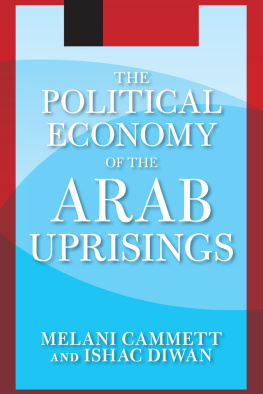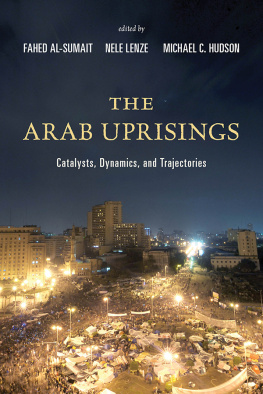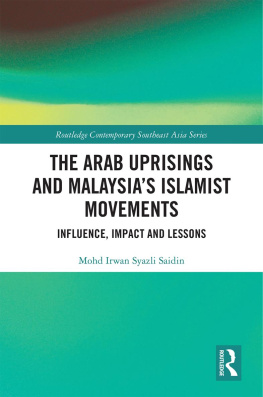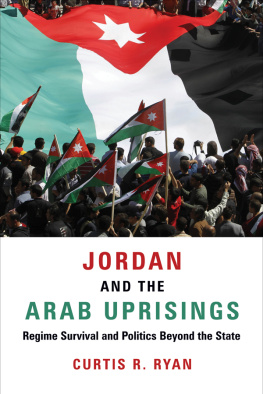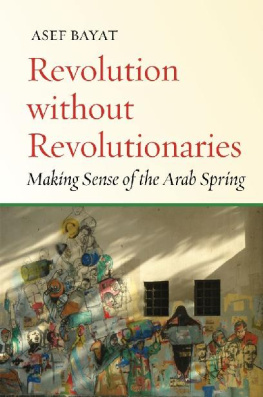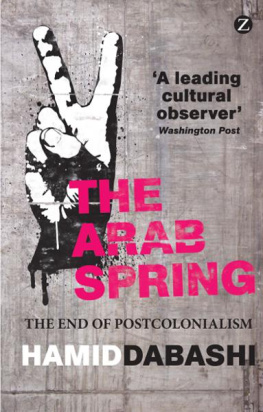Cammett Melani - The Political Economy of the Arab Uprisings
Here you can read online Cammett Melani - The Political Economy of the Arab Uprisings full text of the book (entire story) in english for free. Download pdf and epub, get meaning, cover and reviews about this ebook. City: Arab countries;Middle East, year: 2018, publisher: Routledge, genre: Politics. Description of the work, (preface) as well as reviews are available. Best literature library LitArk.com created for fans of good reading and offers a wide selection of genres:
Romance novel
Science fiction
Adventure
Detective
Science
History
Home and family
Prose
Art
Politics
Computer
Non-fiction
Religion
Business
Children
Humor
Choose a favorite category and find really read worthwhile books. Enjoy immersion in the world of imagination, feel the emotions of the characters or learn something new for yourself, make an fascinating discovery.
- Book:The Political Economy of the Arab Uprisings
- Author:
- Publisher:Routledge
- Genre:
- Year:2018
- City:Arab countries;Middle East
- Rating:5 / 5
- Favourites:Add to favourites
- Your mark:
- 100
- 1
- 2
- 3
- 4
- 5
The Political Economy of the Arab Uprisings: summary, description and annotation
We offer to read an annotation, description, summary or preface (depends on what the author of the book "The Political Economy of the Arab Uprisings" wrote himself). If you haven't found the necessary information about the book — write in the comments, we will try to find it.
The Political Economy of the Arab Uprisings — read online for free the complete book (whole text) full work
Below is the text of the book, divided by pages. System saving the place of the last page read, allows you to conveniently read the book "The Political Economy of the Arab Uprisings" online for free, without having to search again every time where you left off. Put a bookmark, and you can go to the page where you finished reading at any time.
Font size:
Interval:
Bookmark:

Melani Cammett and Ishac Diwan

First published 2014 by Westview Press
Published 2018 by Routledge
711 Third Avenue, New York, NY 10017, USA
2 Park Square, Milton Park, Abingdon, Oxon OX14 4RN
Routledge is an imprint of the Taylor & Francis Group, an informa business
Copyright 2014 by Taylor & Francis
All rights reserved. No part of this book may be reprinted or reproduced or utilised in any form or by any electronic, mechanical, or other means, now known or hereafter invented, including photocopying and recording, or in any information storage or retrieval system, without permission in writing from the publishers.
Notice:
Product or corporate names may be trademarks or registered trademarks, and are used only for identification and explanation without intent to infringe.
Every effort has been made to secure required permissions for all text, images, maps, and other art reprinted in this volume.
A CIP catalog record for the print version of this book is available from the Library of Congress
ISBN 13: 978-0-8133-4944-2 (pbk)
THE POLITICAL ECONOMY OF THE ARAB UPRISINGS
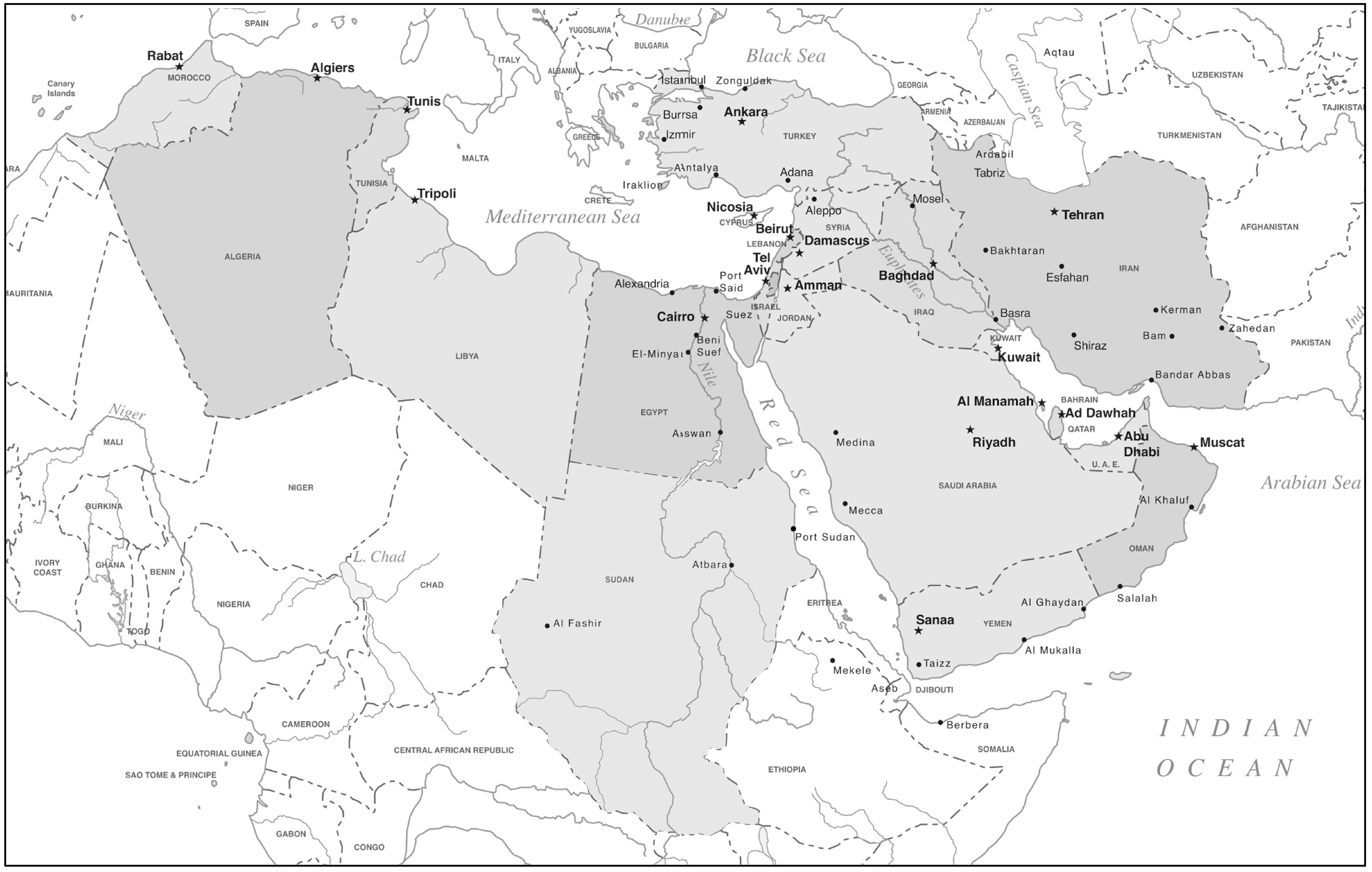
Map 0.1 The Middle East and North Africa
Since the last edition of this book was published, revolutionary movements have swept across the Middle East. The Arab Spring began on December 17, 2010, in Tunisia, where Mohamed Bouazizi, a vegetable seller in the central Tunisian town of Sidi Bouzid, set himself on fire to protest mistreatment by local police and government authorities. Bouazizis act incited a wave of protests, beginning in rural areas and later spreading to urban coastal areas, which encompassed a diverse array of participants ranging from informal-sector workers, like Bouazizi himself, to unemployed graduates, workers, lawyers, and cyber-connected youth. Ultimately, these mass protests led to the ouster of Zine al-Abdine Ben Ali, who had ruled Tunisia in an increasingly repressive manner for over two decades. Protesters demanded justice and accountability from their government and refused to step down, even in the face of brutal repression and government promises to create new jobs and to expand civil and political liberties.
The revolutionary movement then spread to Egypt, where Hosni Mubarak, who had held power for almost thirty years, was ousted after several weeks of protests in Cairo and other cities. In Egypt, too, protesters remained steadfast in the face of a harsh crackdown, calling for Mubarak and his key henchmen to step down. In February 2011, Mubarak resigned and later faced trial for complicity in the murder of protesters. From Tunisia and Egypt, protests spread across the region to Yemen, Algeria, Libya, Syria, Jordan, Bahrain, and even Saudi Arabia. More sporadic and, in some cases, short-lived protests took place in Morocco, Iraq, Lebanon, and Palestine.
Revolutions and rebellions are complex phenomena. Likewise, the motivations for the Arab uprisings are multifaceted. Political concerns, such as outrage over dictatorial rule, repression, and restrictions on basic liberties were undoubtedly important. For many people, however, economic issues were equally if not more salient. A 2005 poll conducted by Zogby International found that expanding employment opportunities, improving the health care and educational systems, and ending corruption were the most important priorities of citizens across the region. Democracy and civic and political rights, though also cited, were ranked lower than socioeconomic concerns (Zogby International 2005). Similarly, the 2010 Arab Youth Survey found that the greatest perceived challenge and concern of Arab youth was the cost of living, followed by unemployment and then human rights. The largest change relative to the previous survey, which was conducted one year earlier, was the increased perception of income inequality (ASDAA/Burson-Marsteller 2010).
More fundamentally, it is difficult to extricate the economic and political motivations for the uprisings given the evolution of Arab political economies over the past few decades. The rise of crony capitalism, which we discuss later in the chapter, underscores the ways in which politics and, more specifically, political connections have shaped economic opportunities in the region. As implied by the slogan Bread, freedom, and social justice, which protesters chanted on Avenue Bourguiba and in Tahrir Square and elsewhere in the region, inequality of opportunity was a central concern. Thus, a political economy approach has much to contribute to interpretations of the initial motivations for the uprisings and of the dynamics of ongoing political and economic transitions.
Despite momentous political changes in the region, many insights from the third edition of this book, which was published over two years before Bouazizi set himself on fire, remain relevant. Some of the core economic and political challenges described in the book were important factors that either directly or indirectly contributed to the uprisings. Richards and Waterbury pointed to insufficient job creation, labor market pressures exacerbated by the youth bulge, the mismatch between educational systems and labor market needs, the declining quantity of water and rising dependency on food imports, the continuing decay of the public sector, the mixed record of economic liberalization, a growing housing crisis in urban areas, and the rise of political Islam across the region.
The Arab Spring also created new developments that cannot be fully appreciated without new analytical tools that were not in earlier editions of this book. With ousted leaders and struggles over the construction of new political institutions in some countries, the classification of regime types in the region must be revised. Even in countries where incumbent rulers remain entrenched, the nature of the political game has changed. Across the region, street politics is an increasingly important form of political expression and citizens are making more forceful and more frequent demands on their leaders. At this juncture, the context of policymaking is altered: New political regimes are emerging, and with the rise of claim-making, rulers are compelled to respond more effectively to citizen demands. Evolving political systems as well as economic developments demand new perspectives on the political economies of the region.
The Arab uprisings also highlight issues that require more in-depth analysis than prior editions of this book emphasized. In particular, the perceived increase in inequalities, discontent with public services, the political economy of cronyism, the narrowing composition of authoritarian coalitions, and succession issues in Arab republics have proven to be important developments across the Arab world.
What explains the origins and dynamics of the Arab uprisings? We believe that a political economy approach has much to offer in addressing this question. Neither purely political concerns, such as the desire of populations for democracy, nor simple economic trends can explain the decisions of protesters to call for the downfall of autocratic rulers. Rather, the interaction of political factors and real and perceived economic developments brought about the uprisings. As we argue later, narrowing authoritarian coalitions in the context of crony capitalism, the rollback of the state, and declining welfare regimes alienated formal-sector workers and tenuous middle classes. In the context of unequal life chances and rising insecurity, growing portions of Arab societies perceived that the inequality of opportunities was on the rise. Thus, neither growth rates nor absolute levels of income inequality can account for popular movements to overthrow incumbent dictators. Rather, perceptions of socioeconomic trends in the context of evolving political economies were at the root of mass protests.
Font size:
Interval:
Bookmark:
Similar books «The Political Economy of the Arab Uprisings»
Look at similar books to The Political Economy of the Arab Uprisings. We have selected literature similar in name and meaning in the hope of providing readers with more options to find new, interesting, not yet read works.
Discussion, reviews of the book The Political Economy of the Arab Uprisings and just readers' own opinions. Leave your comments, write what you think about the work, its meaning or the main characters. Specify what exactly you liked and what you didn't like, and why you think so.

